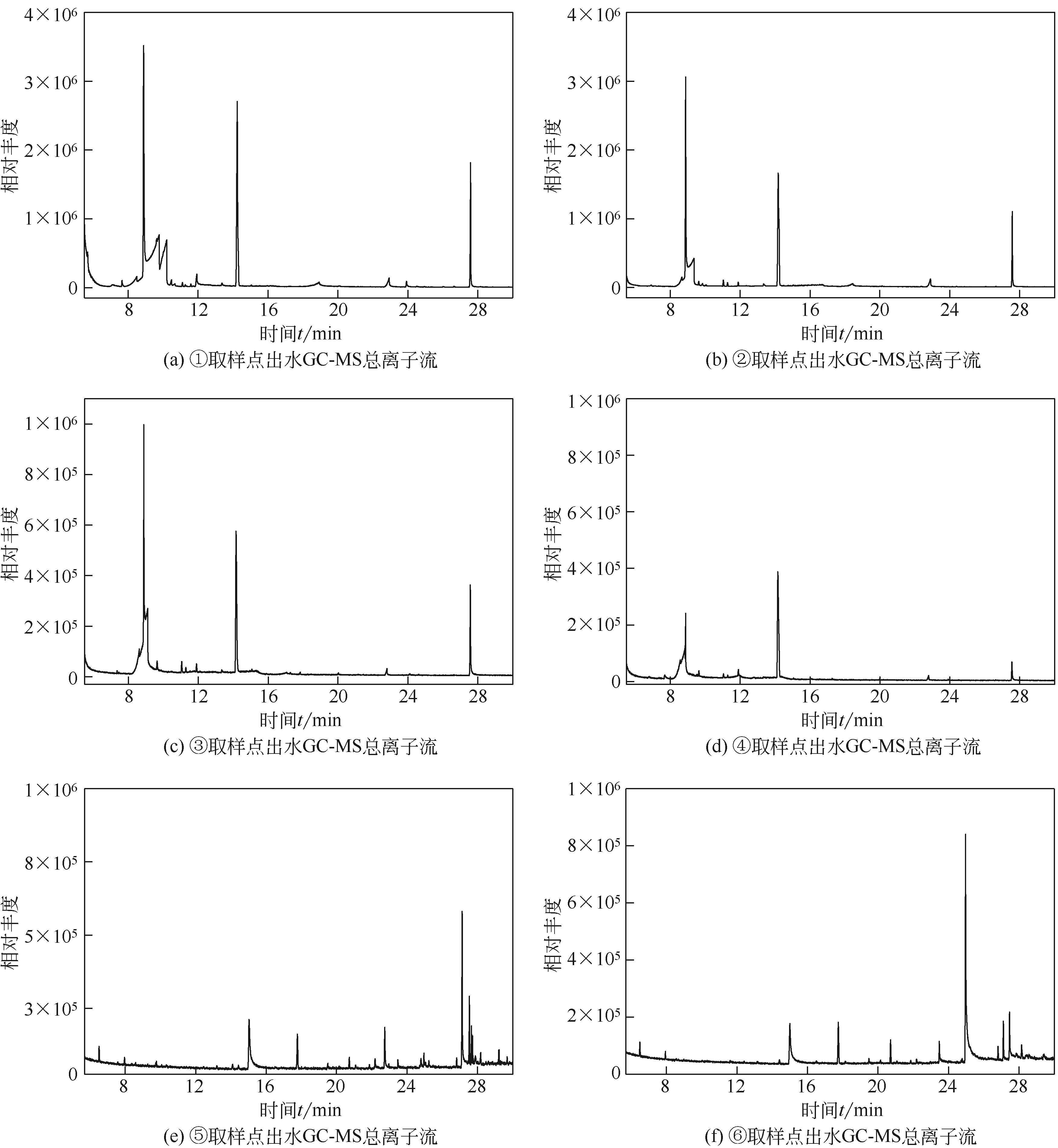| 1 |
孙样, 王宇驰, 张春然, 等. 头孢菌素类抗生素的发现与发展[J]. 国外医药抗生素分册, 2014, 35(4): 154-158.
|
|
SUN Y, WANG Y C, ZHANG C R, et al. Discovery and development of cephalosporin antibiotics[J]. World Notes on Antibiotics, 2014, 35(4): 154-158.
|
| 2 |
RIBEIRO A R,SURES B, SCHMIDT T C. Cephalosporin antibiotics in the aquatic environment: a critical review of occurrence, fate, ecotoxicity and removal technologies[J]. Environmental Pollution, 2018, 241: 1153-1166.
|
| 3 |
MOHAMMAD M A, ELKADY E F, FOUAD M A, et al. Development and validation of a reversed-phase column liquid chromatographic method for simultaneous determination of two novel gliptins in their binary mixtures with Metformin[J]. European Journal of Chemistry, 2012, 3(2): 152-155.
|
| 4 |
KÜMMERER K. Antibiotics in the aquatic environment—A review.Part Ⅰ[J]. Chemosphere, 2009, 75(4): 417-434.
|
| 5 |
SREEKANTH D, SIVARAMAKRISHNA D, HIMABINDU V, et al. Thermophilic treatment of bulk drug pharmaceutical industrial wastewaters by using hybrid up flow anaerobic sludge blanket reactor[J]. Bioresource Technology, 2009, 100(9): 2534-2539.
|
| 6 |
ZHOU L J, YING G G, LIU S, et al. Occurrence and fate of eleven classes of antibiotics in two typical wastewater treatment plants in South China[J]. Science of the Total Environment, 2013, 452: 365-376.
|
| 7 |
ZHANG Q Q, YING G G, PAN C G, et al. Comprehensive evaluation of antibiotics emission and fate in the river basins of China: source analysis, multimedia modeling, and linkage to bacterial resistance[J]. Environmental Science & Technology, 2015, 49(11): 6772-6782.
|
| 8 |
VIKESLAND P J, PRUDEN A, ALVAREZ P J J, et al. Toward a comprehensive strategy to mitigate dissemination of environmental sources of antibiotic resistance[J]. Environmental Science & Technology, 2017, 51(22): 13061-13069.
|
| 9 |
OBEROI A S, JIA Y, ZHANG H, et al. Insights into the fate and removal of antibiotics in engineered biological treatment systems: a critical review[J]. Environmental Science & Technology, 2019, 53(13): 7234-7264.
|
| 10 |
董佩佩, 徐祖信, 李怀正, 等. 中美制药工业水污染物排放标准比较分析[J]. 环境科学与管理, 2012, 37(3): 46-51.
|
|
DONG P P, XU Z X, LI H Z, et al. Comparison between sino-US sewage discharge standards of pharmaceutical manufacturing industry[J]. Environmental Science and Management, 2012, 37(3): 46-51.
|
| 11 |
其布日, 陈吕军, 王建龙. 头孢中间体合成废水组成分析及主要污染物识别[J]. 环境工程学报, 2014, 8(12): 5147-5155.
|
|
QI B R, CHEN L J, WANG J L. Composition analysis of cephalosporin intermediate plant effluent and preliminary identification of major organic pollutants[J]. Chinese Journal of Environmental Engineering, 2014, 8(12): 5147-5155.
|
| 12 |
国家药典委员会. 中华人民共和国药典[M]. 北京: 中国医药科技出版社, 2015: 283-285.
|
|
Chinese Pharmacopoeia Commission. Pharmacopoeia of the people’s republic of China[M]. Beijing: China Medical Science Press, 2015: 283-285.
|
| 13 |
中华人民共和国环境保护部. 化学合成类制药工业水污染物排放标准: [S]. 北京: 中国环境科学出版社, 2008.
|
|
Ministry of Environmental Protection of the People’s Republic of China. Discharge standards of water pollutants for pharmaceutical industry chemical synthesis products category: [S]. Beijing: China Environmental Science Press, 2008.
|
| 14 |
CHELLIAPAN S, SALLIS P J. Application of anaerobic biotechnology for pharmaceutical wastewater treatment[J].OALiB Journal, 2011, 2(1): 13-21.
|
| 15 |
周佳虹, 张翔宇, 李茹莹. 抗生素在污水处理系统中的迁移分布研究进展[J]. 环境科学与技术, 2017, 41(8): 77-86.
|
|
ZHOU J H, ZHANG X Y, LI R Y. Research progress of distribution and migration of antibiotics in wastewater treatment system[J]. Environmental Science & Technology, 2017, 41(8): 77-86.
|
| 16 |
GARTISER S, URICH E, ALEXY R, et al. Ultimate biodegradation and elimination of antibiotics in inherent tests[J]. Chemosphere, 2007, 67(3): 604-613.
|
| 17 |
周文敏, 傅德黔, 孙宗光. 水中优先控制污染物黑名单[J].中国环境监测, 1990(4): 1-3.
|
|
ZHOU W M, FU D Q, SUN Z G. Blacklist for priority control of pollutants in water[J]. Environmental Monitoring in China, 1990(4): 1-3.
|
| 18 |
中华人民共和国国家质量监督检验检疫总局, 中国国家标准化管理委员会. 地下水质量标准: [S]. 北京: 中国标准出版社, 2017.
|
|
General Administration of Quality Supervision, Inspection and Quarantine of the People’s Republic of China, Standardization Administration of the People’s Republic of China. Standard for groundwater quality: [S]. Beijing: China Standard Press, 2017.
|
| 19 |
其布日, 秦传玉, 董军. 废水中苯并噻唑类化合物的污染行为与控制原理分析[J]. 环境化学, 2017, 36(11): 2498-2510.
|
|
QI B R, QIN C Y, DONG J. Occurence and mitigation of benzothiazoles in wastewater[J]. Environmental Chemistry, 2017,36(11): 2498-2510.
|
 ), 顾卫华1, 段锋2(
), 顾卫华1, 段锋2( ), 张西华1(
), 张西华1( ), 赵赫2
), 赵赫2
 ), GU Weihua1, DUAN Feng2(
), GU Weihua1, DUAN Feng2( ), ZHANG Xihua1(
), ZHANG Xihua1( ), ZHAO He2
), ZHAO He2



